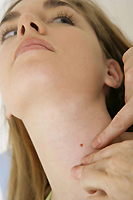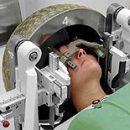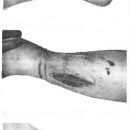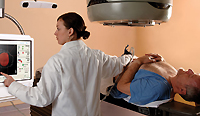Can I prevent melanoma? Is it possible to detect melanoma in the early stages? Read in this article.
Content
Misconception about skin cancer
To protect enough use sunscreen on the beach.
 Even in the cloud days, 85% of ultraviolet rays can penetrate the clouds. This means that you are equally risking in the car, while jogging or, allowing your children to be on the street at any time of the year. It happens even when you are not on the beach. However, on the beach you are usually less dressed, and therefore it is recommended to cover up, even if you use sunscreen. In addition, the sunscreen is washed off with water and therefore it is necessary to apply it repeated every two hours or after each bathing.
Even in the cloud days, 85% of ultraviolet rays can penetrate the clouds. This means that you are equally risking in the car, while jogging or, allowing your children to be on the street at any time of the year. It happens even when you are not on the beach. However, on the beach you are usually less dressed, and therefore it is recommended to cover up, even if you use sunscreen. In addition, the sunscreen is washed off with water and therefore it is necessary to apply it repeated every two hours or after each bathing.
Taking care of your skin now, you protect yourself later
Development of skin cancer can last 20 or more. Specialists argue that most people get about 80% of their life volume of exposure to sunlight still under the age of 18. So, only one strong tan in childhood can double the risk of melanoma at a later age. Caring for your skin can really reduce your risk, but it will not eliminate the completely inflicted damage.
Tan means you are already protected
People with darker skin color have a smaller probability of cancer. However, tanned skin is actually damaged skin. Re-lighting wounds the skin and increases the risk of skin cancer by 20%.
On cloudy days it is impossible to burn
Just the fact that the sun is hidden by clouds, does not mean that you do not need to protect. As mentioned above, powerful ultraviolet solar rays will still achieve your skin even in cloudy days.
View these common delusions and understand that the sun rays will always be able to find you. Unless you are indoors, you will never be fully protected.
Is it possible to detect melanoma in the early stages
Melanoma can be diagnosed in the early stages when it is amenable to treatment.
Self-examination
 It is advisable to examine your skin monthly. You need to know all your moles, stains, freckles and other features of your skin in order to notice their changes. Self-examination is better carried out in a well-lit room in front of a large mirror. Little mirror can be used to inspect the hard-to-reach places.
It is advisable to examine your skin monthly. You need to know all your moles, stains, freckles and other features of your skin in order to notice their changes. Self-examination is better carried out in a well-lit room in front of a large mirror. Little mirror can be used to inspect the hard-to-reach places.
Husband or wife, as well as any other person can assist in self-examination of the skin, especially when inspecting the back and rear thighs. It is necessary to inspect all the fields of the body, including palms, soles, the scalp, ears, subnogric zones and spins. All suspicious areas of the skin should be a doctor. In men, every third melanoma arises on his back.
The appearance of new spots on the skin, the change in their size, shape, sensation or color should alert and make a survey. Unusual ulcer, seal, stain or change on the skin can be a sign of skin cancer or harbinger of tumor. The skin can be a scaly or crushed, possibly mocking or bleeding. Skin can be made, become very vulnerable or painful. Perhaps the development of redness and swelling.
Since moles can turn into melanoma or raise the risk of melanoma, it is important to know about the differences between melanoma and ordinary mole. It is sometimes difficult to see the differences between these two states, so the doctor will seem better for greater certainty.
Ordinary Moles (Nets)
Conventional Moles (Nets) are brown, yellow-brown or black spots. They can be flat or elevated, rounded or oval. Typically, moles are of about 6 millimeters, they may already be at the birth of a child or may appear in children's or young adult age. Perhaps the simultaneous occurrence of several moles, especially in solar suspension areas.
If the mole appeared, it usually remains one size, shape and colors for many years. The elderly people can gradually disappear.
Most people have moles and almost all of them harmless. However, it is important to detect changes and suspect the emergence of melanoma.
Unusual moles
Suspicious focus or unusual moles need to show specialist. If Melanoma cannot be completely eliminated, then it is necessary to carry out a detailed examination, including dermatoscopy or epiluminescent microscopy, which allows you to study in detail education on the skin and detect melanoma at an early stage.
Symptoms and symptoms of melanoma
Some signs and symptoms help to distinguish the usual Mountain (Necess) from melanoma:
Asymmetry: One half of the mole does not match another.
Wrong borders: Borders of moles are uneven, serrated, fuzzy.
Molescence unequal and has a variety of shades: yellowish brownish, brown, black, sometimes with sections of red, blue and white.
Diameter: Moles usually exceed 6 millimeters in diameter. Recently, melanomas are increasingly detected in size from 3 to 6 millimeters.
Other important signs of melanoma are: change in size, shape or color of the moles, as well as the emergence of new skin formations.









